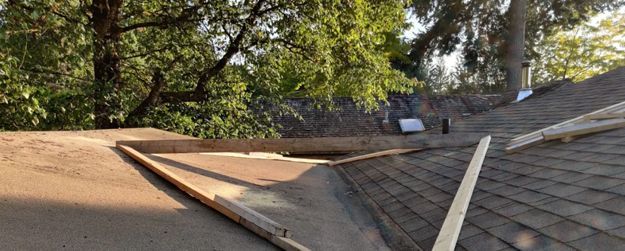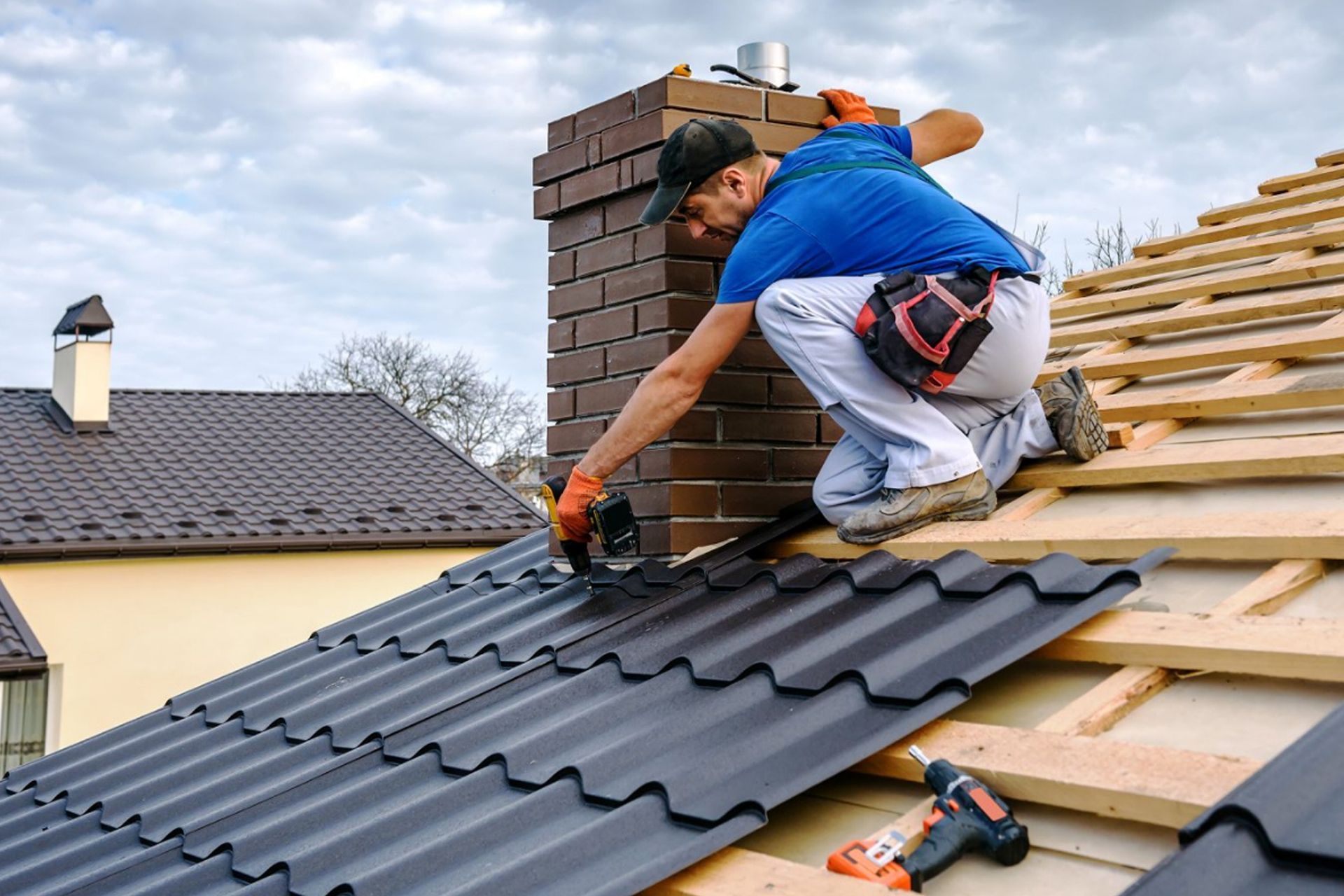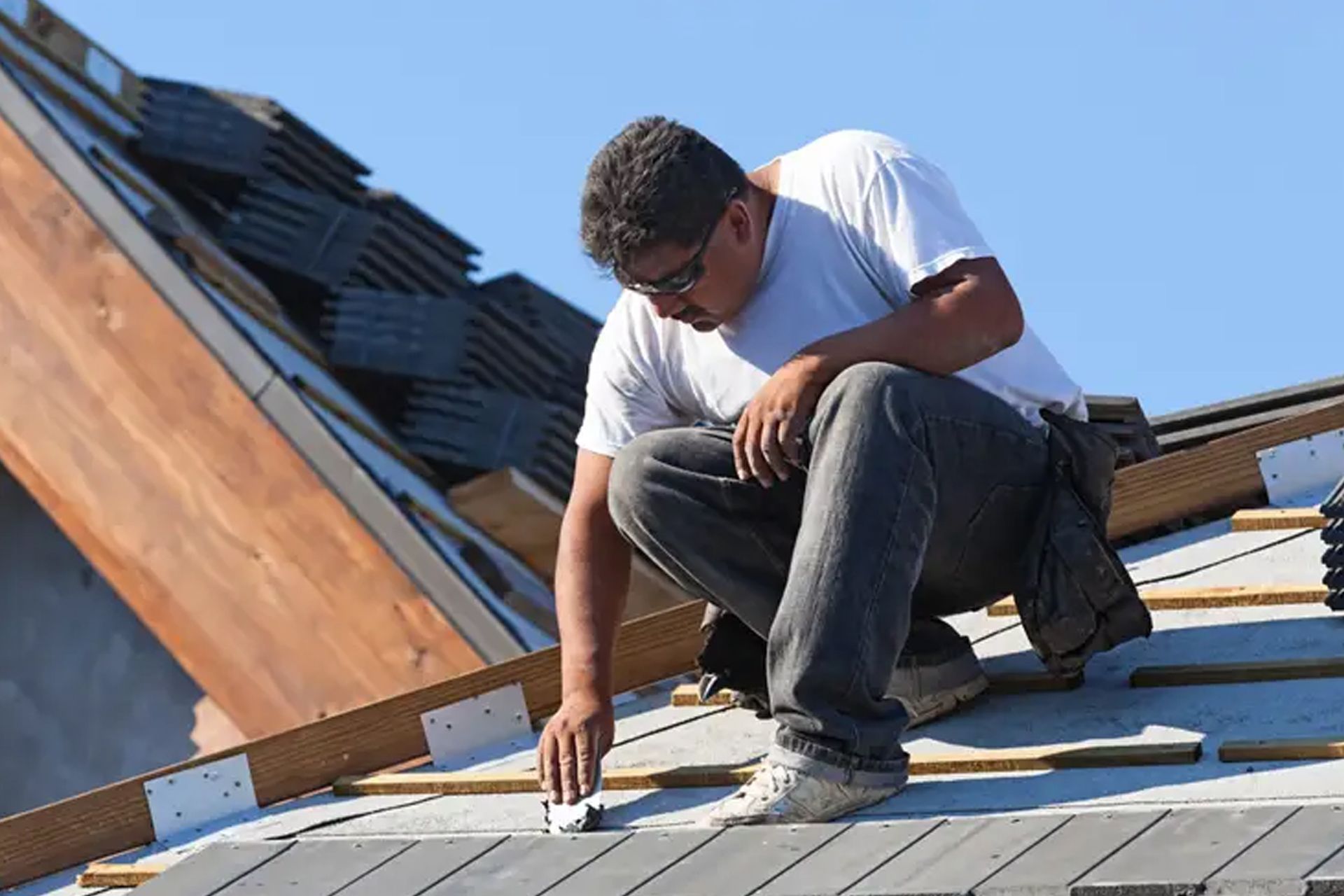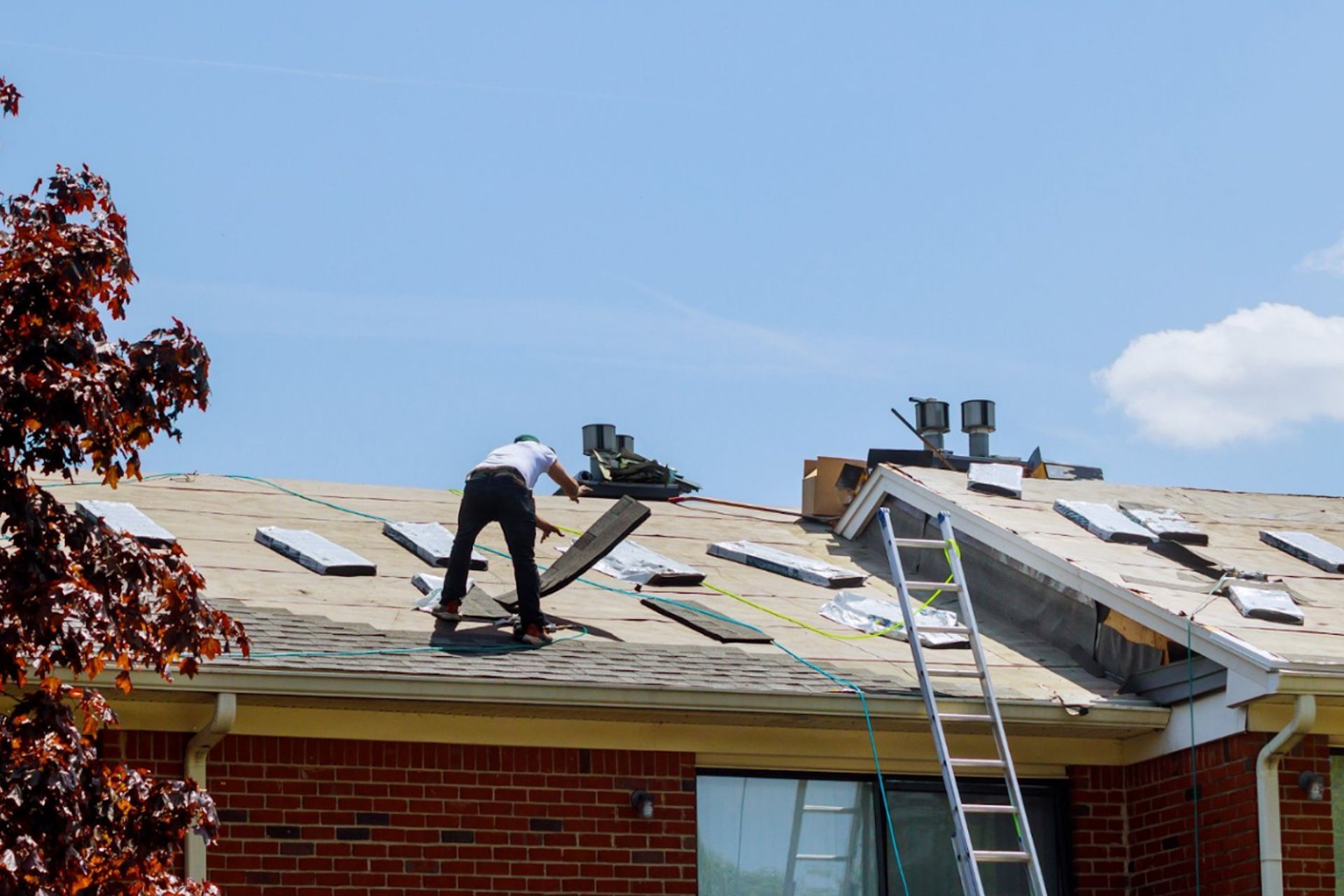The Importance of Roof Cricket: A Comprehensive Guide to Home Protection
Incorporating a roof cricket design is pivotal for any homeowner, particularly those in areas like Florida, where heavy rainfall is common. These essential structures, often called roofing crickets or simply crickets, divert water away from features such as chimneys and channel precipitation toward the gutters. This strategic design ensures the integrity and longevity of roofing installations. Installing roof crickets, known for their distinctive V-shaped structures or roof saddles, is a critical aspect of roofing in Florida. These cricket roofing solutions aid in efficiently managing water flow on the roof surface and play a vital role in protecting against potential water damage, making them a key component in selecting roofing materials.
Material choices and specific roof cricket design options play a significant role in the effectiveness and durability of cricket installations on roofs. For metal or asphalt shingle crickets, selecting the right roofing materials is crucial to enhancing drainage efficiency and preventing ponding and standing water around vulnerable areas such as chimneys and dormer windows.
Furthermore, understanding the installation process of roof cricketing, which includes professional assessment and precision techniques, is essential for Florida homeowners aiming to bolster their home's defense against harsh weather elements. This knowledge is a cornerstone of a robust roof system and can often lead to considerations for roof replacement to ensure optimal protection.
What Are Roof Crickets?
Roof crickets, or saddles or simply crickets, are angled structures installed on roofs to divert water away from obstacles such as chimneys, skylights, vents, or other protrusions. They are typically triangular or V-shaped and are positioned on the uphill side of these obstacles. Roof crickets prevent water pooling or leakage around these features by guiding rainwater toward the gutters or other drainage systems. They are an essential component of effective water management strategies in roofing systems.
Function and Placement:
- Diverts water around large roof penetrations to prevent pooling
- Transitions water flow between different roof areas, crucial for both low-slope and steep-slope roofs
Design and Material Considerations:
The pitch of cricket is tailored to the roof; on steep-sloped roofs, it either matches or is less than the roof's slope, while on flat roofs, a flat roof cricket is often designed to be steeper to promote better drainage and prevent water accumulation.
Materials for crickets range from durable metal roofing for smaller crickets to matching roofing materials for larger ones, ensuring both durability and aesthetic consistency with the existing roof design, thus contributing to the overall integrity and performance of the roofing structure.
Regulatory Compliance and Impact:
Since 2012, the International Building Code has emphasized the importance of understanding what a roof cricket is, mandating their installation for chimneys wider than 30 inches to prevent water damage effectively.
Besides water management, crickets protect against debris accumulation, extending the roof's lifespan.
This highlights the crucial role of roof crickets, often queried as 'what is a roof cricket', in enhancing roof performance and durability, marking them as a vital component in roofing systems, particularly in high-rainfall areas such as Florida.
Assessing the Need for Roof Crickets
Assessing the need for roof crickets involves evaluating several factors related to the roof's design, local climate, and potential water drainage issues. Here are key considerations:
- Roof Pitch: Steeper roof pitches may naturally shed water more effectively, reducing the need for crickets. Lower-pitch roofs are more prone to water pooling and may benefit from crickets to redirect water flow.
- Roof Obstacles: Identify any roof penetrations such as chimneys, skylights, vents, or equipment curbs. These obstacles can impede water flow and may require crickets to divert water away from them.
- Local Climate: Consider the frequency and intensity of rainfall in the area. Regions with heavy rainfall or frequent storms may require more robust water management solutions, including crickets.
- Potential Water Damage: Assess any history of water damage or leaks around roof penetrations. Crickets can help prevent future water infiltration and protect the roofing system's integrity.
- Building Codes and Regulations: Check local building codes and regulations, as they may stipulate the use of crickets in certain situations, especially in areas prone to heavy rainfall or high winds.
By carefully evaluating these factors, you can determine whether roof crickets are necessary to effectively manage water drainage and protect your roofing system from potential damage. Consulting with a roofing professional can also provide valuable insights into assessing the need for roof crickets based on your specific circumstances
Integrating roof crickets into roofing systems offers many advantages, ensuring enhanced functionality and extended durability. These architectural elements, often called roofing crickets, are pivotal in a roof's overall performance.
Water Diversion and Damage Prevention
- Acting as a cricket for the roof, these structures prevent water accumulation near chimneys and effectively channel rain and other weather elements toward the gutters. This cricket function on the roof is vital for maintaining the roof's structural integrity and protecting the home.
- Roof crickets are ingeniously designed to divert water away from critical areas, helping to circumvent the common and costly mistake of improper water diversion, which can lead to extensive damage to the roofing system.
Aesthetic and Structural Advantages
- Beyond their practicality, roof crickets serve as an architectural element that enhances curb appeal by improving the visual transition between the roof and chimney area, thereby increasing property value.
- A well-designed roof cricket extends the chimney's lifespan by shielding it from water ingress. It reinforces the roof structure under the weight of heavy snowfall, promoting even load distribution and preventing potential collapse.
Maintenance and Efficiency
Roof crickets simplify roof maintenance. Incorporating a roof cricket into roofing maintenance routines is key in mitigating debris accumulation at the chimney's base, such as leaves and sticks. This strategic positioning reduces the chances of blockages and potential damage, ensuring a clear path for water flow and debris clearance.
The meticulous installation of a roof cricket, incorporating robust roof cricket design and detailed sealing, is pivotal for enhancing the roof's longevity. Ensuring the cricket on the roof is constructed with durable materials and the correct angling safeguards the roof's structural integrity and wards off water damage.
Materials and Design Options for Roof Crickets
Selecting the appropriate roofing materials and a roof cricket design that marries functionality with aesthetic appeal is crucial. This guide offers an analysis of choices tailored to various specifications:
Material Options:
- Heavy-Duty Materials: For resilience and robustness, options like metal roofing, wood, or PVC stand out. Each provides distinct advantages in weather resistance and fortifies the roof's structural soundness.
- Shingle Compatibility: Harmonising the shingles on the roof compared to those on the main roof or considering an upgrade to advanced roofing materials like synthetic shingles can elevate the structure's visual charm and protective capabilities.
- Budget and Aesthetics: The selection process should consider the homeowner's financial plan and the aesthetic they aspire to achieve. A spectrum of roofing materials is available, from traditional asphalt shingles to contemporary PVC and TPO roofing membranes, for a sleek appearance.
Design Considerations:
Slope RequirementsFor efficient water channeling, flat roof crickets require a minimum gradient of 1/4 inch per foot. The cricket's height should be on par with or surpass the roof's pitch to guarantee unimpeded water flow.
Types of Crickets:
- Flat Cricket: Utilises a single sheet angled between 30-45 degrees.
- Hip/Ridge Cricket: Made from two sheets, offering a seamless integration with the roof's design.
- A Reverse Cricket is especially suited for roofs with a gentler pitch. It is designed with an incline that opposes the main slope to enhance water dispersion, making it an effective solution for flat roof cricket applications.
Installation Essentials:
Durability and SealingIncorporating cricket construction techniques that utilize materials renowned for their durability and weather resistance while ensuring the cricket in construction is correctly angled and sealed can avert leaks and structural damage, thereby enhancing the cricket's lifespan.
Width and Valley SlopeFor peak performance, roof cricket detail should include a width of at least 24 inches and an extension past the draining vertical surface, coupled with a valley slope that surpasses the roof deck's inclination.
Installation and Maintenance
The installation and upkeep of a roofing cricket are critical to achieving a superior roofing system, especially in challenging weather conditions like those in Florida.
Installation Process:
- Professional Installation: It's essential to hire skilled professionals for cricket roofing installation to guarantee accuracy and effective water diversion. Improper installation could damage water, thwarting cricket roofing's protective intent.

- Measurements and Placement: Strategic placement of cricket on the roof, ideally at least 24 inches from the ridge line or valley, is crucial for efficient water management and is in line with established roofing standards.
- Comprehensive Steps: The process of installing a cricket involves stripping away the existing roofing materials around the chimney to expose the roof decking, constructing a cricket frame, reinforcing it, sheathing the cricket with roof sheathing, and then applying underlayment, followed by metal flashing or a combination of flashing and shingles, which may be part of a roof replacement project.
Maintenance Tips:
- Regular Inspections: To prevent potential complications, it's advisable to conduct a roof inspection of roof crickets routinely, preferably before the autumn season, to check for any damage or obstructions that could compromise their function.
- Seasonal Maintenance: Checking for signs of wear, sealing gaps or cracks, and removing any debris or moss buildup are essential practices for maintaining a roof's integrity. Applying roof coatings and ensuring the roof underlayment is secure are also beneficial, particularly in areas with heavy snowfall where extra waterproof protection can be a boon.
- Professional Assistance: Hiring a professional contractor, such as Roof Smart of SW Florida, for installation and maintenance can provide peace of mind. They can assess the slope and overall condition of the roof cricket, ensuring its effectiveness in diverting water away from the roof. Don't hesitate to contact them for expert service.
Through this comprehensive exploration of what is roof cricket, we've navigated the multifaceted roles they play in optimizing roofing systems. The discussion underscored their invaluable function in diverting water, enhancing durability through strategic design, and their significance in complying with building regulations, particularly in rainfall-prone regions like Florida. Materials and design choicesThe examination offered insights into tailoring roof crickets to specific environmental challenges and aesthetic preferences, ensuring both functionality and visual harmony. By selecting the appropriate roofing materials and implementing a meticulous roof cricket design, homeowners can achieve a seamless integration with the existing roofing landscape.
In the broader context of home protection, implementing roof crickets, roofing crickets, or crickets for roof, emerges as a crucial aspect of effective roofing strategies. These elements safeguard structures from the potentially devastating effects of water damage and debris accumulation. The narrative amplifies the importance of precise, professional installation and propels homeowners towards informed engagement with their roofing systems, igniting a proactive stance on home protection.
FAQs
What is the function of a cricket on a roof?
A cricket, a saddle, is a raised structure designed to redirect water on a roof. It is often referred to as a roof saddle or cricket. It is typically installed around the higher side of major roof penetration, such as a skylight, chimney, or equipment curb, and is an integral part of what a cricket is on a roof and what a cricket is in roofing. Crickets also facilitate the transition between roof areas, enhancing water redirection capabilities.
Is it necessary to have a cricket installed on my roof?
While not all North American building codes mandate the installation of a chimney cricket, it is generally required if your chimney's width exceeds 30 inches on the side that runs parallel to the roof's ridge. Understanding what a roof cricket is is important to measure your chimney to determine if a cricket is needed for your roofing system.
How much does it cost to install a roof cricket?
The expense associated with installing a roof cricket can fluctuate, especially when considering financing options for a roof repair or replacement project.
At what point should a chimney cricket be installed?
When the chimney's width, measured parallel to the ridgeline, exceeds 30 inches, it becomes essential to install a chimney cricket, which is what a roof cricket is commonly referred to as. This stipulation is mandatory unless the chimney directly adjoins the roof's ridgeline.










